Funding Your Trust: The Most Critical Step
For over 30 years, I have drafted thousands of sophisticated Revocable Living Trusts for families across New York. These are powerful legal instruments, designed to avoid probate, protect privacy, and provide for loved ones with maximum efficiency. Yet, I have also seen countless families arrive at my office with a beautifully drafted trust from another firm, only to discover a tragic, fatal flaw: the trust is an empty shell. It owns nothing. This failure to “fund” the trust is, without exaggeration, the cardinal sin of estate planning.
Creating and signing a trust document is only the first step. A trust is like a powerful, private vault you build to protect your family’s inheritance. But if you never take the time to move your valuables *inside* the vault, it is nothing more than an expensive, empty box. An unfunded trust will not avoid probate. It will not protect you during incapacity. It will fail to accomplish the very goals you created it to achieve, leaving your family to face the public, costly, and time-consuming court process you sought to avoid.
At Morgan Legal Group, we believe our job is not just to draft documents, but to ensure they work. This 2026 guide is a definitive manual on the most critical step in the entire process: properly funding your New York Revocable Trust. We will explain why it’s essential and provide a step-by-step blueprint for every major asset class. To ensure your vault is not empty, contact our firm for a comprehensive review.
Part 1: The “Why” of Funding – Consequences of an Empty Trust
Before we dive into the “how,” it is essential to understand the severe consequences of failing to fund your trust. Understanding the high stakes will motivate you to complete this crucial process.
Consequence #1: Complete Failure of Probate Avoidance
This is the primary reason most people create a trust. When you die, assets titled in your sole name must go through the probate process in New York Surrogate’s Court. If your house, your bank accounts, and your investment accounts are still in your individual name, your trust has no control over them. Your will must be probated, and these assets will be subject to a court process that is public, often takes more than a year, and incurs significant legal fees, executor commissions, and court costs—all paid from your estate.
Consequence #2: Failure of Incapacity Planning
A living trust is a powerful tool for managing your affairs if you become incapacitated. If you have a stroke or develop dementia, your chosen successor trustee can step in to manage the trust assets for your benefit. However, they only have authority over assets *owned by the trust*. If your accounts are still in your name, your trustee is powerless. Your family will be forced to initiate a costly and public guardianship proceeding to gain the authority to access your own money for your own care.
Consequence #3: Loss of Privacy and Control
When unfunded assets go through probate, your will and an inventory of those assets become a public record. Anyone can see what you owned and who inherited it. Furthermore, the detailed instructions and protections you built into your trust—such as creating a lifetime protective trust for a child—may fail if the assets never make it into the trust in the first place.
Part 2: The Master Guide to Funding – An Asset-by-Asset Blueprint
Funding is the meticulous process of changing the legal ownership of your assets from you, as an individual, to you, as the Trustee of your trust. This process, known as “retitling,” varies for each asset class. Here is your 2026 blueprint.
Funding Your Real Estate
For most New Yorkers, their home is their most valuable asset.
- The Process: Your attorney will prepare and record a new deed. The new deed will transfer ownership from “John Smith” to “John Smith, as Trustee of the John Smith Revocable Trust dated [Date].”
- Primary Residence: Transferring your primary residence to your revocable trust is standard practice and does not affect your mortgage or property tax exemptions, like the STAR exemption in New York.
- Out-of-State Property: If you own a condo in Florida or a house in New Jersey, it is crucial to title that property in your NY trust. This will avoid a costly, separate “ancillary probate” proceeding in that state upon your death.
- Co-ops: Co-operative apartments in New York City have a unique funding process. It requires getting the approval of the co-op board and amending the stock certificate and proprietary lease, a process our firm handles routinely.
Funding Your Financial Accounts
Bank Accounts (Checking, Savings, CDs, Money Market)
The Process: You will need to work with your bank to change the title on your accounts. Some banks can simply retitle an existing account, while others may require you to open a new account in the trust’s name. You will need a “Certificate of Trust,” a document your attorney provides that proves the trust’s existence. Your checks and debit cards will now be issued from the “John Smith Revocable Trust” account, but you sign them as “John Smith, Trustee.”
Non-Retirement Investment Accounts (Brokerage Accounts)
The Process: Similar to bank accounts, you must contact your financial institution (e.g., Fidelity, Schwab, Morgan Stanley). They will have a specific set of forms to retitle your brokerage account from your individual name or joint name into the name of your trust. This is a critical step to avoid probate for your investment portfolio.
Funding Your Business Interests
If you own a small business, transferring your ownership interest is a key part of the plan.
- LLCs and Partnerships: Your ownership is typically transferred via an “Assignment of Membership/Partnership Interest” from you as an individual to your trust. This must be coordinated with your company’s operating agreement.
- Closely-Held Corporations (S-Corps and C-Corps): This involves canceling your existing stock certificates and reissuing new ones in the name of your trust. For S-Corps, specific trust language is required to preserve the S-election with the IRS.
This is a complex area where an experienced attorney like Russel Morgan is essential to avoid negative tax or legal consequences.
Funding Your Personal Property
What about your “stuff”—your furniture, art, jewelry, and other tangible items?
The Process: For these assets, your attorney will prepare a document called a “General Assignment of Personal Property.” This single document formally transfers all of your tangible personal property into your trust. You should keep this signed document with your trust agreement. For exceptionally valuable items, like a piece of fine art, you may also want to list it specifically.
Part 3: What *Not* to Fund – The Strategic Exclusions
Just as important as knowing what to put in your trust is knowing what to leave out. Attempting to retitle certain assets can cause significant tax problems or unnecessary complications.
Retirement Accounts (IRAs, 401(k)s, 403(b)s)
NEVER change the *owner* of your retirement accounts to your trust. Doing so would be treated by the IRS as a complete withdrawal of the funds, triggering a massive and immediate income tax liability.
The Correct Strategy: For these accounts, the proper method is to change the **beneficiary** designation. You name your trust as the primary or contingent beneficiary of the retirement account. This allows the funds to be governed by the terms of your trust after your death, avoiding probate and providing asset protection for your heirs. This is a crucial distinction in our wills and trusts practice.
Vehicles (Cars, Boats)
In New York, it is often unnecessarily complicated to title vehicles in the name of a trust. It can create issues with insurance and the DMV. In most cases, it is simpler to leave vehicles in your individual name and let them be handled by your “pour-over” will.
Part 4: The Ongoing Process – Keeping Your Trust Funded
Funding is not a one-time event. It is an ongoing process. A common mistake is creating and funding a trust perfectly, and then, five years later, buying a new vacation home or opening a new investment account in your individual name, thereby leaving it outside the protection of your plan.
The Golden Rule of Trust Ownership
Once your trust is established, you should adopt a new mindset: **”I will acquire all new assets in the name of my trust.”** When you buy a new property, you instruct the real estate attorney to title it directly in the trust. When you open a new account, you open it in the trust’s name from the start.
Your Year-End Funding Review
At the end of each year, as part of your financial review, do a quick “funding check-up.” Look at your bank statements, investment statements, and property tax bills. Do they all list the trust as the owner? If you find an asset that is outside the trust, make it a priority to retitle it in the new year.
Conclusion: From Empty Shell to Lasting Fortress
Your Revocable Living Trust is one of the most powerful estate planning tools ever devised, but it only works if you use it correctly. The act of funding is what breathes life into the document, transforming it from a stack of legal papers into a dynamic and effective shield for your family. Committing the cardinal sin of failing to fund your trust negates your planning and leaves your loved ones to face the very court system you intended to avoid.
The process of funding a trust is meticulous and requires attention to detail. It is the final, critical step in building your legacy’s fortress. Do not leave your vault empty. Contact Morgan Legal Group to schedule a consultation. Whether you are creating a new trust or have an existing one that needs a funding review, we will ensure that your plan works as intended, providing complete protection and peace of mind for you and your family.
For more consumer information on trusts, you can visit the resources provided by the American Bar Association.







